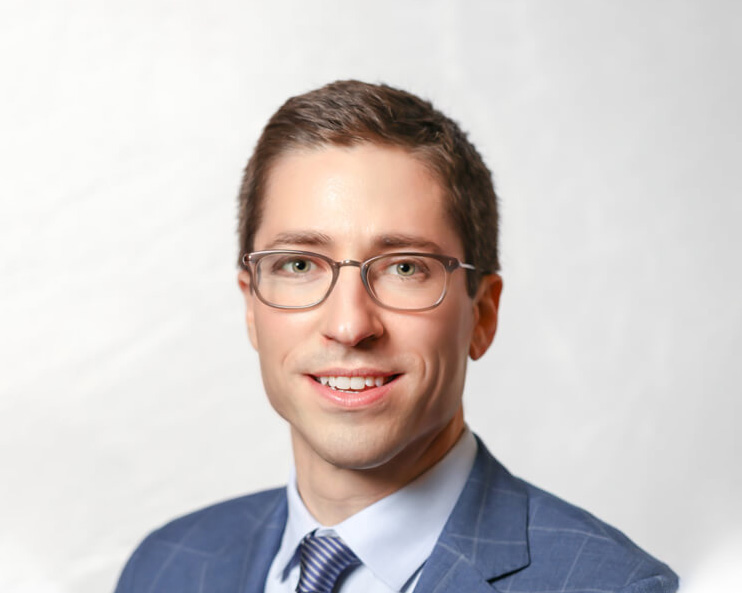May is Ocular Melanoma Awareness Month. Ocular (uveal) melanoma is a rare but dangerous disease, and only a small number of doctors in the United States treat it. At Texas Retina Associates, we have been caring for ocular melanoma patients for over 40 years and are fortunate to currently have two physicians who sub-specialize in treating this rare eye cancer. Today we will get to know Timothy S. Fuller, MD.
A Texas native and son of retired Texas Retina physician Dwain Fuller, MD, Dr. Timothy Fuller joined Texas Retina Associates in 2016 after completing his ocular oncology training under international eye cancer research and treatment leaders Jerry A. Shields, MD, and Carol Shields, MD, at Wills Eye Hospital in Philadelphia, Pennsylvania.
Dr. Timothy Fuller is heavily involved in ocular melanoma research, serving as an active member of the Collaborative Ocular Oncology Group, a network of most major ocular and medical oncology physicians in North America. He is also serving as a Principal Investigator for the AU-011 clinical trial which is testing an activated viral nanoparticle that has been shown in prior studies to selectively destroy cancer membrane cells while sparing the overlying retina when activated by a special laser. In fact, last year, he was the first in the nation to treat a patient with AU-011 delivered via suprachoroidal injection.
What drew you to the field of ocular oncology?
Ocular oncology is a rare sub-specialty of ophthalmology. Most treatments offered by ophthalmologists are designed to protect or improve sight. What drew me to ocular oncology is that we treat to protect life.
What do you find rewarding about caring for patients with this rare and dangerous disease?
I continue to work in the field of ocular oncology, and specifically uveal melanoma, because there is so much more to be done. Through our patients and their willingness to participate in research, we are increasing our knowledge of the disease. Our patients provide the opportunity to unlock better treatments. I consider it both an honor and privilege that patients allow me to be a part of their care team. In addition, to be able to collaborate with other oncologists, medical professionals and scientists on a daily basis is simultaneously rewarding and challenging. Not a day goes by that I do not consider myself fortunate to have a profession that is so engaging.
What was it like training under the Shields?
Training under Drs. Jerry and Carol Shields was a dream come true. There are few people who have left such a tremendous mark on the field of ocular oncology. To see firsthand how they care for patients with all types of eye cancer, their dedication and their innovative practices, was truly awe-inspiring. One of the many things I learned from Dr. Carol was the importance of a good drawing. While so much in ophthalmology and medicine these days is digital, including photography, a detailed drawing of a tumor with annotations is more valuable to me than even the most high-resolution image. I rely on these drawings to make radiation plans and to guide treatment during surgery to place and remove the plaques.
Your father was also an ocular oncologist and involved in some of the early research in the field in the 1980s. What did you learn from him?
My father taught me from an early age that to be a physician is a true privilege. To be able to care for patients and to offer them something which few other people can is also a tremendous responsibility. For eye cancer patients, the responsibility is even greater. My father also taught me how to recognize and distinguish malignant melanoma from benign lesions. I remember spending hours in his home office as a child reviewing photographic slides at his backlit slide viewer (which would now be considered an antique), and as I grew older, shadowing him in clinic and the operating room. His bedside manner was unmatched (as I’m reminded on a daily basis by his former patients), and I strive to emulate the example he provided.
What is the most effective approach to caring for patients with ocular cancer?
The most difficult visit for patients is often their first, when they hear their diagnosis perhaps for the first time. Cancer is scary, and for some patients, losing sight is even scarier. Combining these two things can be downright terrifying. My approach is to reassure the patient that we will be with them, helping them tackle this challenge together, one day at a time. I let them know that it is okay not to have “all” the “right” questions, and that it is normal and expected to feel overwhelmed. I let them know that we will help them each step of the way so that they are able to take charge of their diagnosis and treatment plan.
What are the most important things patients should look for in an ocular oncologist?
Experience and trustworthiness. Number one, a patient should feel comfortable that their ocular oncologist has seen what they have and feels comfortable treating them. And if their physician does not feel comfortable treating them, that the provider is willing to tell them that. In addition, a patient should have trust in the relationship. At Texas Retina, we strive to communicate clearly with patients and let them know all of their options.
What is on the horizon that might improve care or outcomes for ocular oncology patients?
We are very excited about the Aura trial as it represents potentially the first novel treatment for uveal melanoma in decades and one with less destructive effects on patients’ vision. In addition, we look forward to forthcoming results and data from the Collaborative Ocular Oncology Group 2 study and potentially novel treatments for metastatic disease in coordination with our medical oncology colleagues.
Dr. Timothy Fuller cares for patients in our Dallas Main and Athens offices. You can learn more about him here. Click here to learn more about ocular melanoma.


